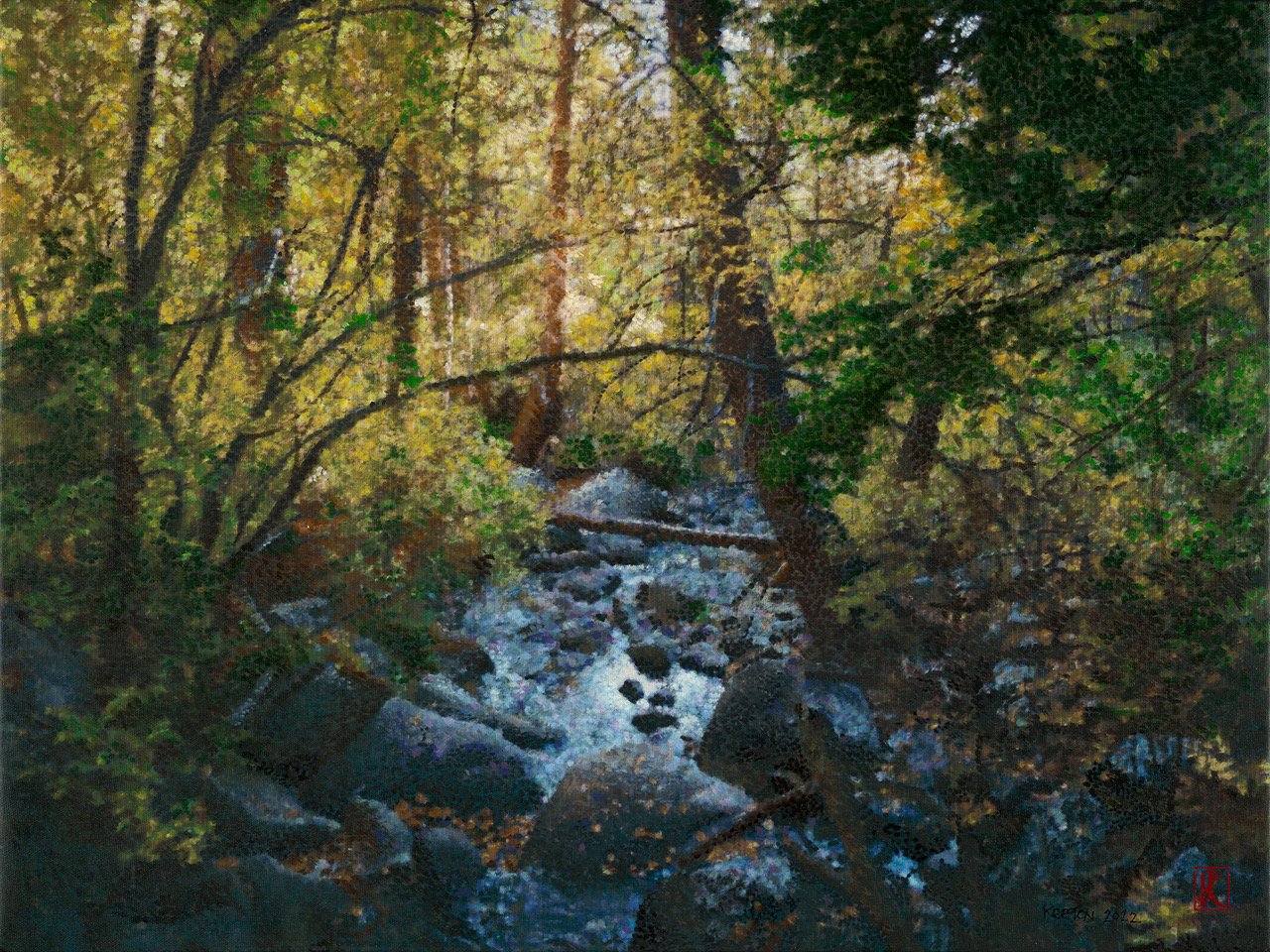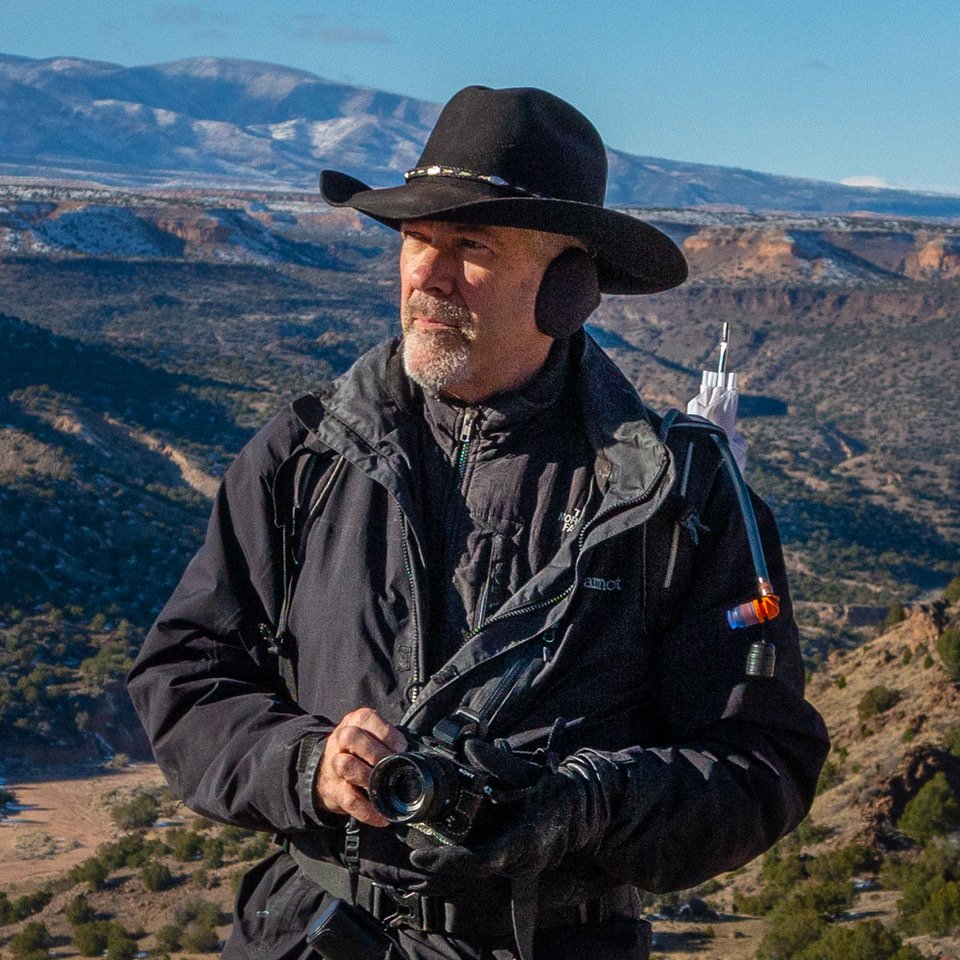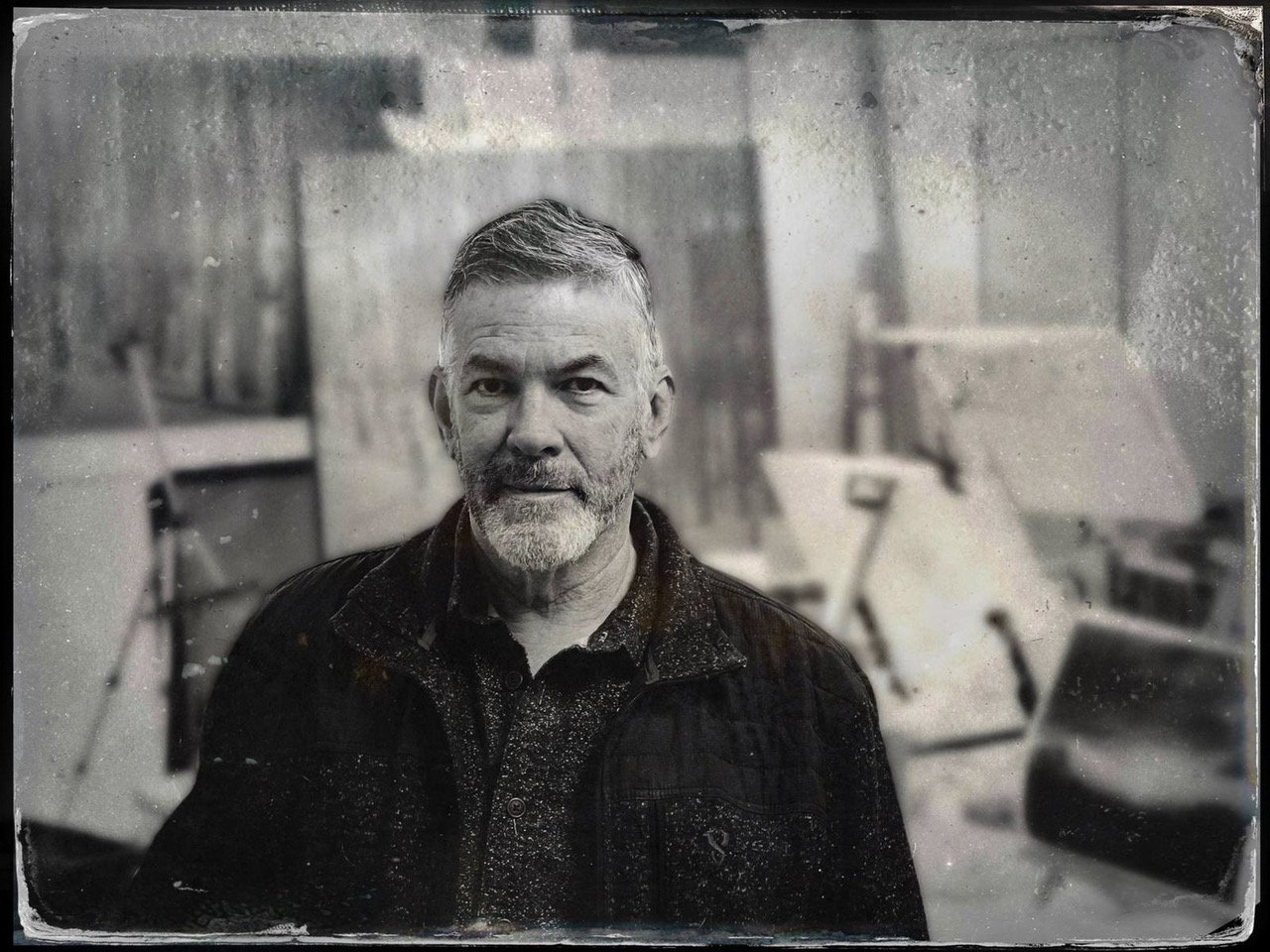Interview
Jonathan Keeton
Jonathan Keeton studied painting in London and theater in Paris.
He worked as a schoolteacher, a waiter and actor, and then spent thirty years as a pioneer in digital visual effects for television, films and commercials. All this was before returning to his first love, painting landscapes and nocturnes.
Jonathan currently lives in Portugal with his wife Melinda Tidwell, and two dogs.
What is your background and how did you start your journey in the art world?
“I studied watercolor painting in London and theater in Paris, before stumbling into computer graphics in California on one of the very first Quantel Paintbox systems. That led to a thirty-year stint as a pioneer in digital visual effects for television, commercials and film.
I left and returned to painting, moving eventually to Santa Fe, New Mexico, where I lived for ten years working as a full time artist. As a result of a large 4' x 6' commission, I started painting in oils instead of just watercolors. I mostly paint in oils now.
Recently, my wife, the artist Melinda Tidwell and I moved to Portugal. We are enjoying our life in the country and look forward to being able to travel more easily in Europe, and to finding new sources of inspiration.”
What does your work aim to say? Does it comment on any current social or political issues?
“I tend to paint either forest landscapes or nocturnes. I’m inspired by the beauty in nature; that everything is just so. I also feel that at night, our influence wanes and the natural beauty of things takes over again. I work from photographs that I take while out on rambles, as the paintings take me a while and the light changes too much while working plein air, although I do studies on location from time to time. I use the work as a meditation on what I’m seeing and on the impulse to honor the natural world.
I find my subject matter by going out either at dawn or towards sunset, or occasionally in the middle of the night. I try to find places that move me, and choose the next painting by which image calls to me the most. I sort of fall in love with the scene, and then, when I discover how demanding it is to paint, it’s too late!”
“I make paintings of the wilderness, cities, and little towns before dawn.
My paintings bring to life that awe-filled mystery of being alive on this planet.”
Which current art world trends are you following?
“I follow painters whose work moves me. I also continually return to the masters for inspiration. I deeply appreciate both abstract and representational work from many artists.”
Do you plan your work in advance, or is it improvisation?
“My work is pretty much fully planned out. The most improvisational part of my process is when I’m out finding images.
There’s a feeling that flows through me when I get to a really beautiful place. Suddenly, I’m not tired anymore. Whatever I was worried about vanishes and all I feel is, “Wow!” Then I aspire to try and convey that feeling in a painting, which involves a lot of planning and focus … and a few happy accidents along the way.”


What process, materials, techniques, etc., do you use to create your artwork?
“I generally work from photographs. I shoot RAW and grade them in Adobe Lightroom, as that gives me the most control over the images. Once I choose an image for a painting, I sketch it on the surface—usually linen these days—and also print a large image exactly the size of the painting. I cut this up into pieces to use for references as I work, so I don't have to raise my head up to look at an image.
Occasionally, I’ll step back from that initial painting and work on another painting. I’ve found that each painting takes its own time. When I get stuck, I leave the piece for a while, and then when I get back, I know what to do. ”
What does your art mean to you?
“We are more divorced from the natural world than at any time in our species’ history. The average American spends 93% of their time indoors.
We need the tonic of wildness, as it feeds something important in us.”
What’s your favorite artwork and why?
“One of the most influential paintings for me is Three Erratics by Neil Welliver, which I saw in the Hirschorn Museum back in the ’70s. It’s a highly accurate representational image, yet somehow also very modern and almost abstract. It’s a huge painting, and one doesn’t so much look at it as enter into it. It remains a big inspiration for me.”
Have you had any noteworthy exhibitions you'd like to share?
“I’ve mostly been in group shows at galleries. Noteworthy exhibitions to come!”









